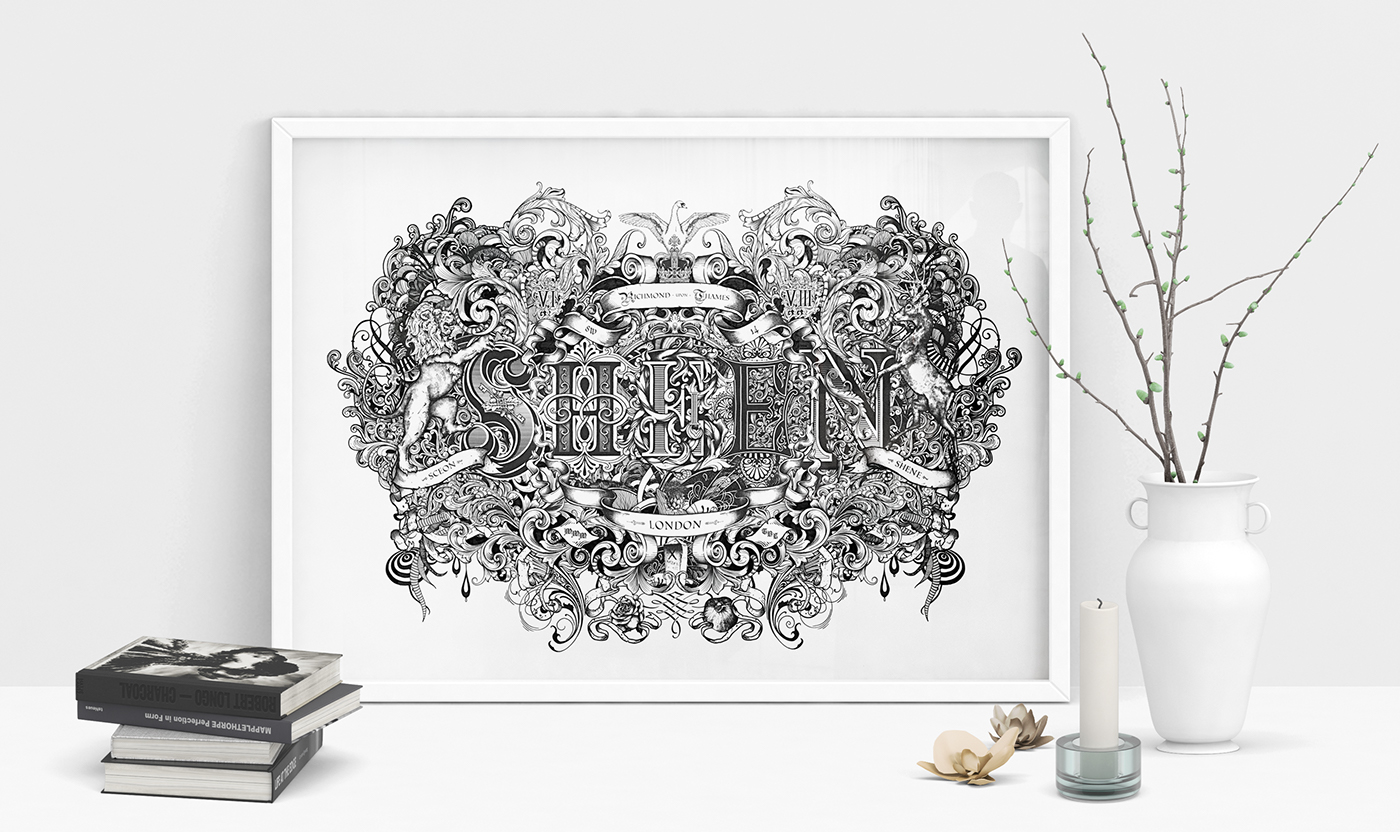
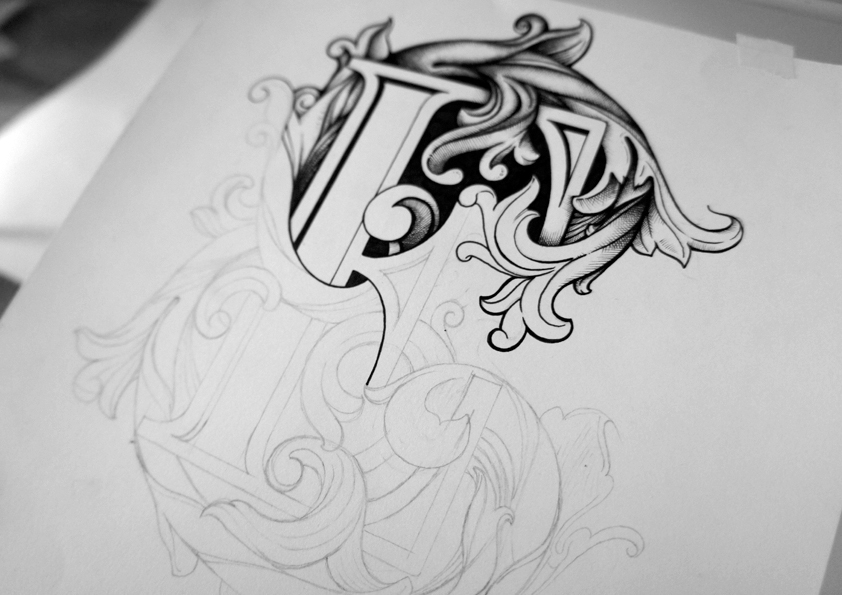
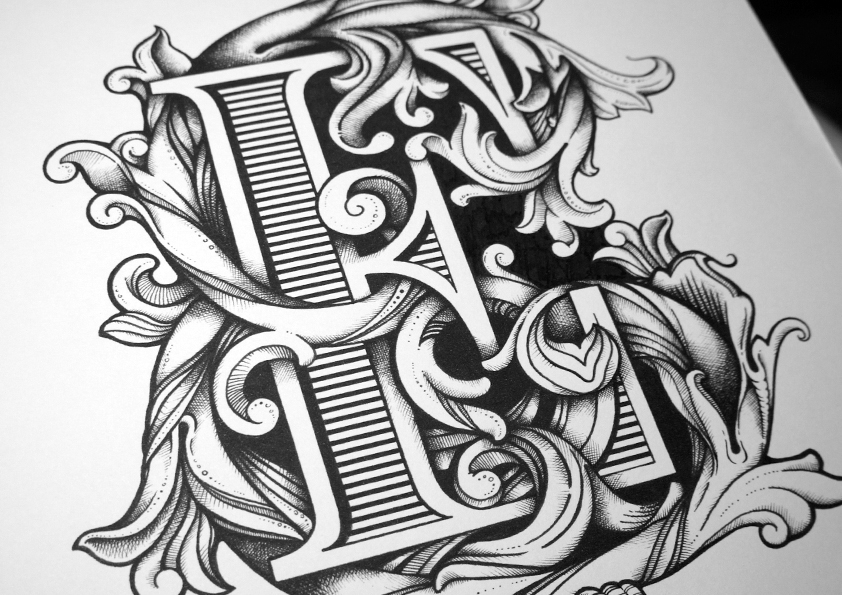
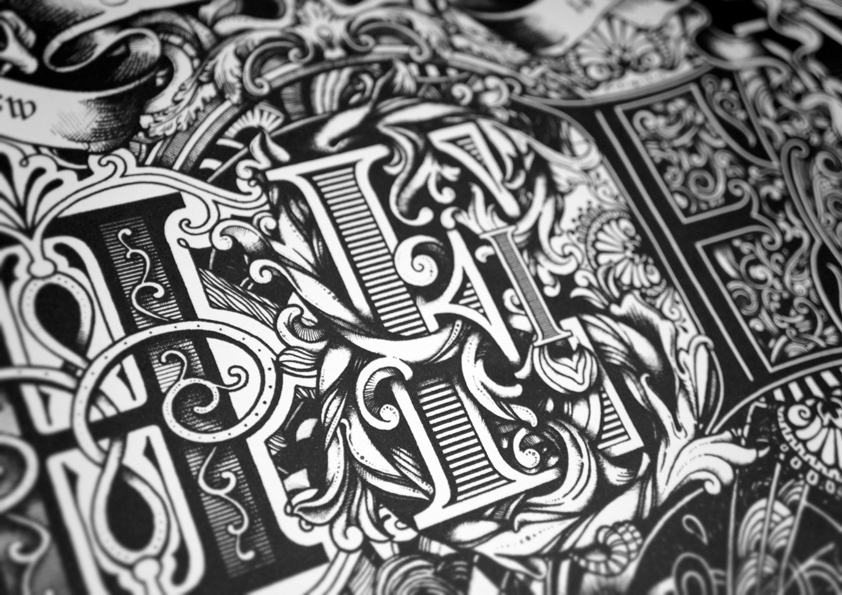

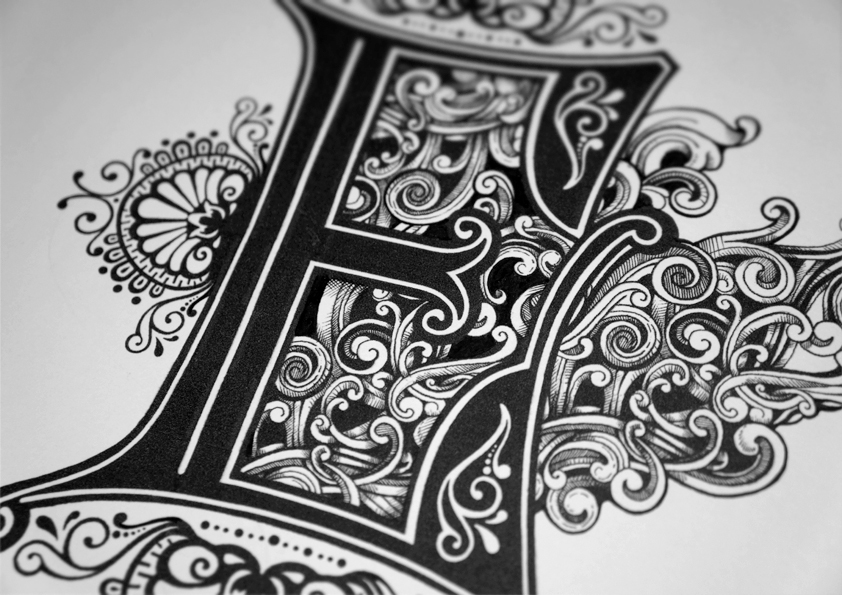


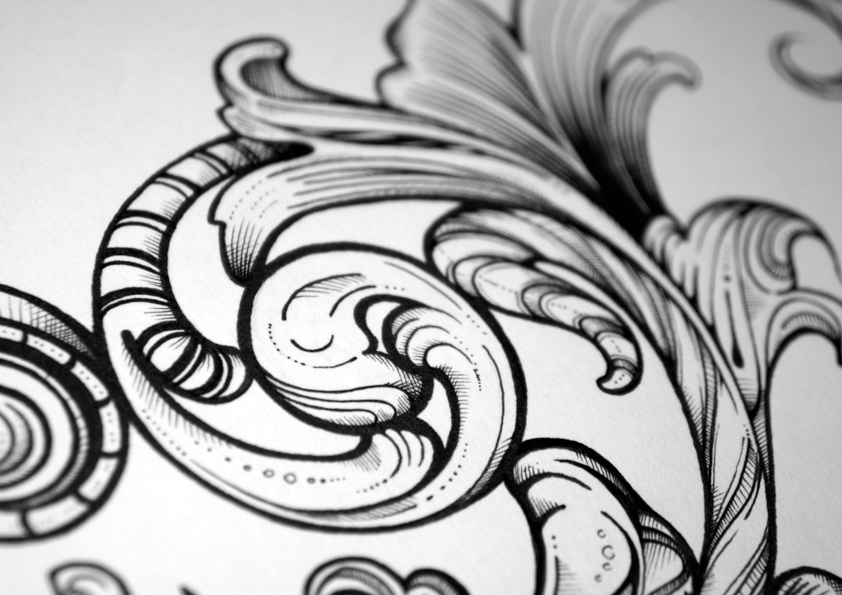

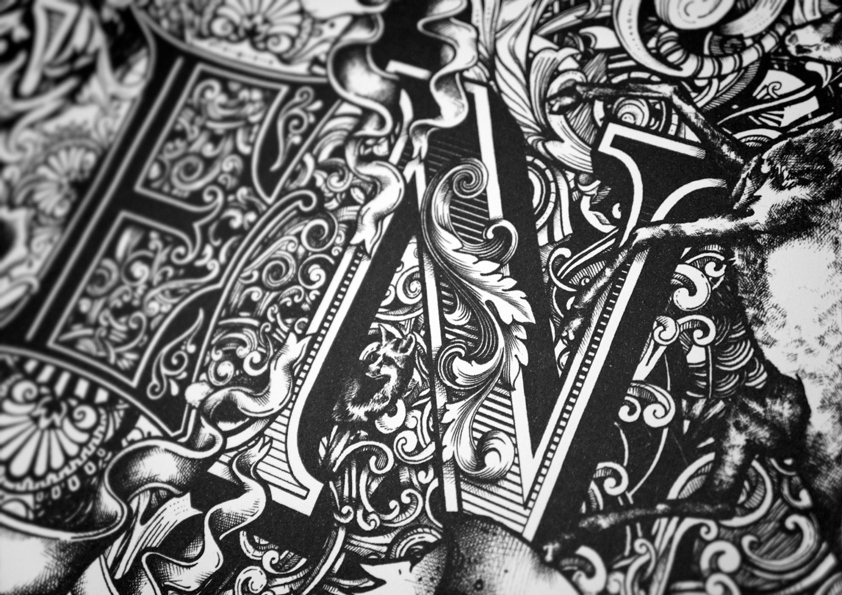
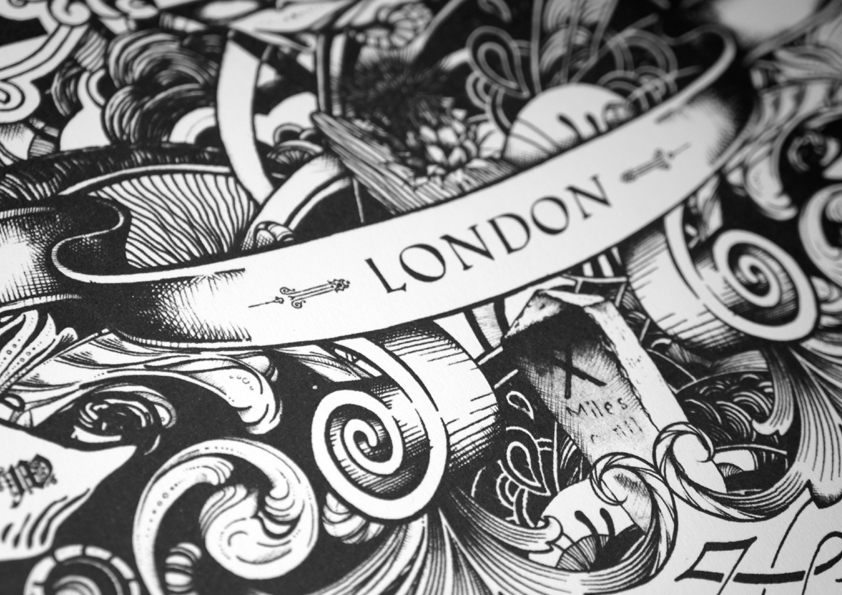
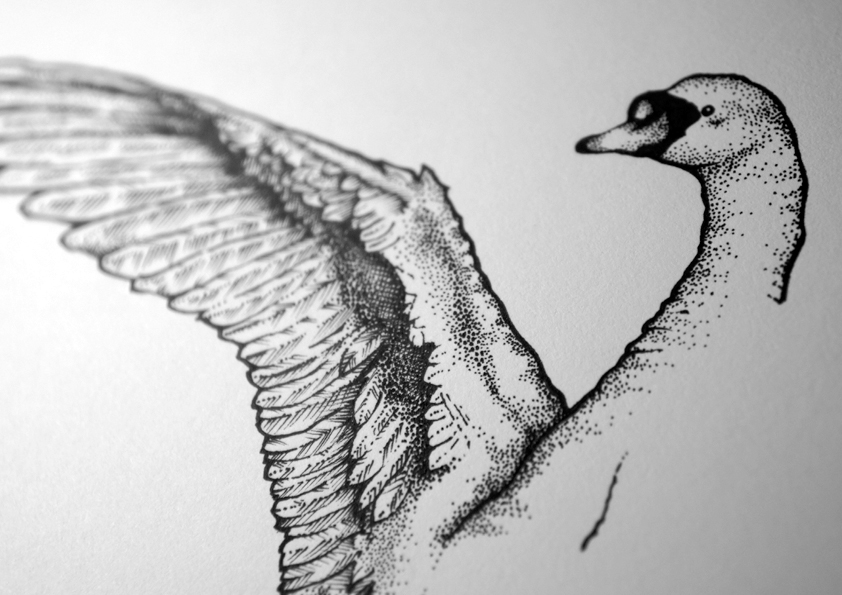
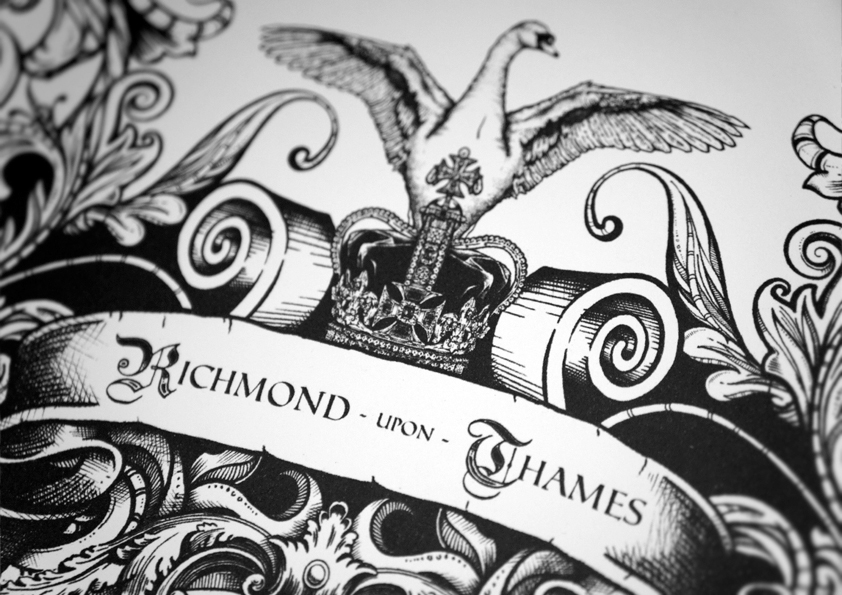
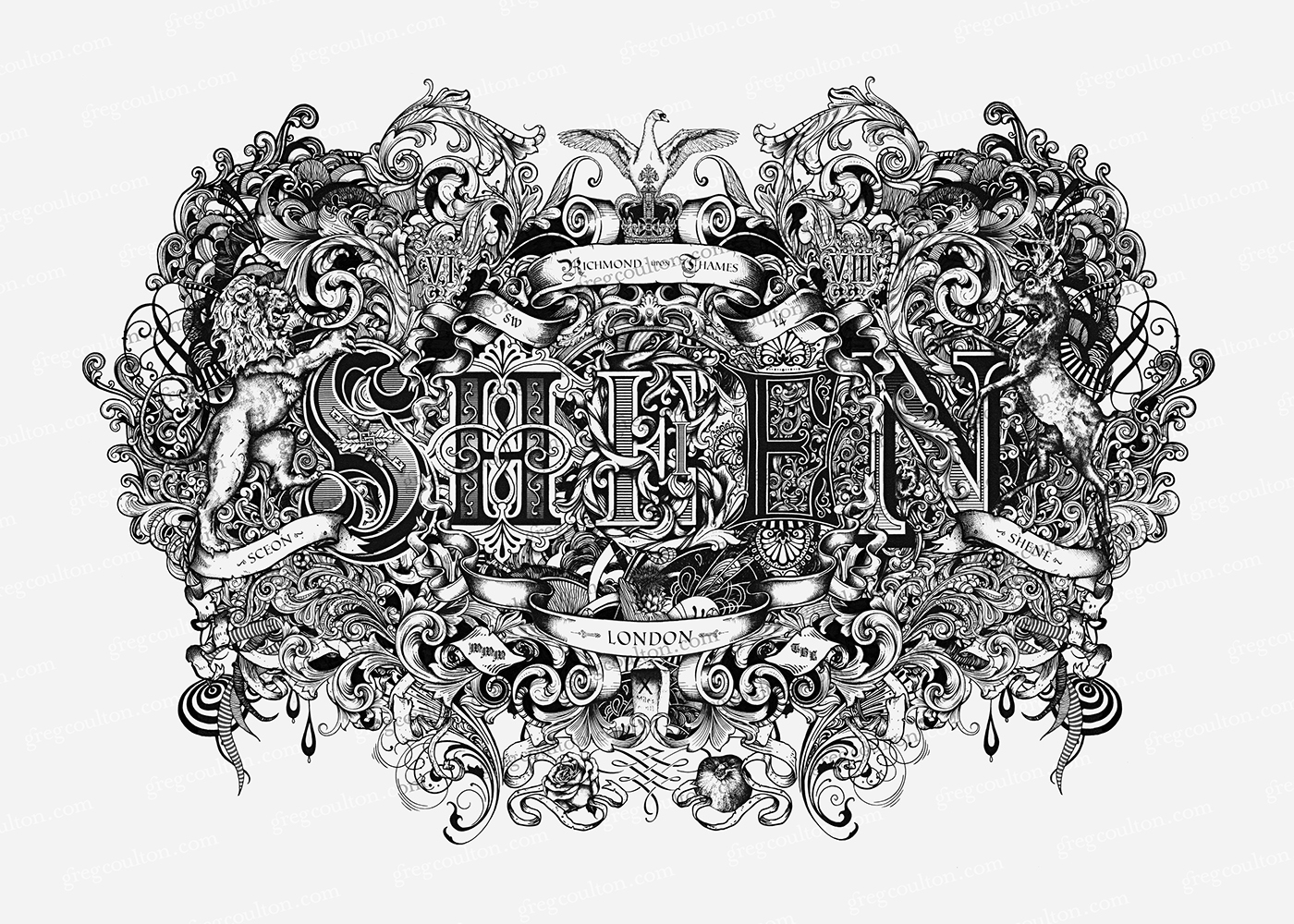
'SHEEN' EXPLAINED:

Sheen’s history is somewhat complicated, due to it’s uncertain boundaries and ever-changing municipal governance. It is a place of great historical importance, most significantly to a long succession of ruling monarchs, dating back to Henry I.
‘Sceon’ (1) is the earliest recording of the name in c.950, meaning shed or shelter. There are numerous different spellings recorded over the centuries, including Syenes, Schene, Sheanes and Shene (2).
In 1299 Edward I took his whole court to the manor-house at Sheen, which thus became a royal palace. A few years later in 1305, William Wallace was executed in London, and it was in Sheen that the Commissioners from Scotland went down on their knees before Edward. Edward I is depicted here as ‘EI’ (3) forming the first ‘E’ in ‘SHEEN’.
The execution of William Wallace is illustrated by a solitary beheaded thistle (4) beneath the ‘E’ for Edward.
In 1383 Richard II was the first English king to make Sheen his main residence, which became formally known as Sheen Palace.
Under Henry VII’s rule, a fire destroyed most of the wooden buildings on the site. Henry rebuilt it and named it Richmond Palace after his title of Earl of Richmond. In 1502, Henry VIII celebrated Christmas at Richmond Palace. In her ‘Memoirs of the Court of Henry the Eighth’, Mrs. A. T. Thomson wrote of those celebrations:
“On the night of the Epiphany (1510), a pageant was introduced into the hall at Richmond, representing a hill studded with gold and precious stones, and having on its summit a tree of gold, from which hung roses and pomegranates (5 & 6). On another occasion, in the presence of the court, an artificial forest was drawn in by a lion (7) and a stag (8), the hides of which were richly embroidered with golden ornaments”
When Elizabeth I became queen she spent much of her time at Richmond, as she enjoyed hunting stags in the ‘Newe Parke of Richmonde’ (now the Old Deer Park). Elizabeth died there on 24 March 1603. There continue to be red deer in Richmond Park today (8), possibly descendants of the original herd.
Another animals with royal lineage found within the boundaries of Richmond Park are Swans. Here the Royal swan (9) is portrayed with outstretched wings, opposite to its usual serene posture, in order to depict the often turbulent history of the monarchy during their time in and around Sheen.
Sheen continues it’s relationship with people of historical significance to this day, as the inventor of the World Wide Web - Sir Tim Berners-Lee, grew up in East Sheen and attended Sheen Mount Primary School. He is honoured here with the letters ‘WWW’ (10) and ‘TBL’ (11).
Until the expansion of Greater London in 1965, Sheen was originally part of Surrey. Here the letter ‘S’ (12) is for Surrey, and is adorned with the intertwined keys and acorns derived from Surrey County Council’s Coat of Arms.
The generally accepted ‘centre’ of Sheen is known as the Triangle on the Green, found where Sheen Lane and Upper Richmond Road cross.
Sharing the triangle is the East Sheen War Memorial and Milestone (13). The distances still visible on the Milestone read ‘VI’ (14), ‘VIII’ (15) with
‘X’ (13) featuring on two sides.
Sharing the triangle is the East Sheen War Memorial and Milestone (13). The distances still visible on the Milestone read ‘VI’ (14), ‘VIII’ (15) with
‘X’ (13) featuring on two sides.
The animals (Lion, Swan & Stag), Flora (Thistle, Rose & Pomegranate) and Roman Numerals (VI, VII & X) all appear within the piece in threes, depicting the three sides or corners of a triangle - thus representing Sheen’s centre ‘The Triangle on the Green’.


